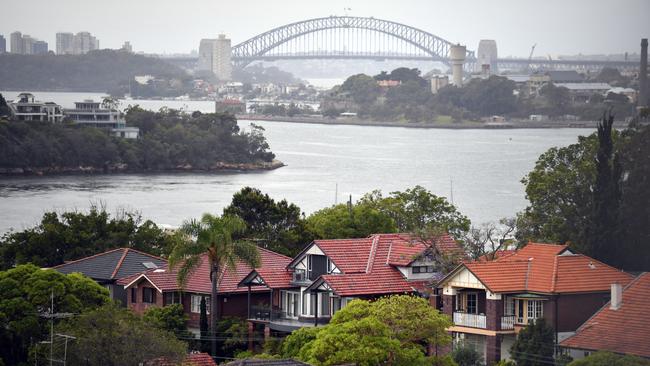APRA sacrifices sensible interest-only loan cap on property’s altar
Rather than looking to the long term resilience of the financial system, APRA appears to have bowed to political pressure.

It sounds familiar, but that’s actually the current situation in the UK, where the Financial Conduct Authority has since 2012 taken extraordinary steps to reign in loose standards in the banking sector after finding interest-only loans, which don’t require repayment of a loan’s principal amount for a period of generally five years, helped fuel a housing boom ahead of the global financial crisis.
The situation couldn’t be more different here today, with the Australian Prudential Regulation Authority appearing to have buckled to political pressure and the concerns of its sister regulator, the Reserve Bank, by scrapping its own crackdown on interest-only loans, getting rid of the restriction that interest-only loans make up at most 30 per cent of all new lending. The rule had been in place for only 18 months.
For its part, APRA contends it came up with the idea to scrap the cap independent of any other regulator, or Canberra for that matter. It believes the temporary cap has done its job, and if banks want to start lending out interest only loans again, deposits will be larger and borrowers will be able to repay their mortgages.
While the UK’s financial watchdogs managed to get in early, APRA waited until interest-only lending accounted for nearly 50 per cent of all new loans in the market. And it wasn’t fringe operators hawking the risky products which can trap people in hefty loans they have little ability to repay. About half of the loans held on Westpac’s $400 billion portfolio were held on an interest-only basis, for instance.
The UK continues to enforce higher standards on the banking sector, with one eye on the time bomb of loans, worth hundreds of billions of pounds, due to mature, switching from interest-only to principal and interest, where monthly repayments jump by about 50 per cent.
But in Australia, regulators have thrown in the towel on higher standards in an attempt to keep the local property bubble from bursting. More than $300 billion of interest-only loans are due to expire over the next five years, and without the ability to refinance into another interest-only loan, APRA and the RBA have been worried about a wide-scale rise in loan defaults.
Rather than ensuring the longer-term resilience of the financial system by lifting standards, the regulators have decided it’s easier to keep borrowers in a permanently revolving line of credit where they are never expected to repay their loans.
With house prices falling in Sydney and Melbourne, people who should never have been sold a loan by banks that were too greedy to check whether borrowers could repay their mortgages may soon find themselves in negative equity.
Many of them are investors, as more than three-quarters of interest-only loans were taken up by property speculators. Under negative gearing laws, investors could deduct the interest payments from their tax bill, never paying a dollar out of their own pocket on the loan, and then flipping the property when they were happy with their capital gain.
Indeed, it was’t so long ago that Philip Lowe’s RBA was less worried about propping up the housing bubble than it was interested in ensuring it didn’t inflate too much further.
In a speech just this April, assistant governor Chris Kent said the value of interest-only loans as a product “has limits”.
“For housing investors, the key motivation for using an interest-only loan is clear. By enabling borrowers to sustain debt at a higher level over the term of the loan, interest-only loans maximise interest expenses, which are tax deductible for investors,” he said.
Since the royal commission shamed the sector over its nonchalant approach to compliance with responsible lending laws, the banks have withdrawn from the market. Loan applications are now thorough and credit decisions are often overturned.
The RBA and APRA now appear less concerned about whether the banks comply with these laws, which was always the domain of ASIC, than whether they are simply lending or not.
Whether the move to scrap the cap works is unclear, but the damage of its bungled intervention has already been done. Since introducing the 30 per cent cap, borrowers barred from the regulated sector flooded the shadow non-banking sector, which has grown at its fastest pace in a decade. Standards are even lower in the non-bank sector, while interest rates are significantly higher, leaving the regulated industry a larger weakness in the body of the financial system than it was before the intervention.
Meanwhile, as banks hiked interest rates on interest-only loans to dampen demand for the product to comply with the 30 per cent cap, the taxpayer has suffered. Due to negative gearing tax deductions, higher interest rates are resulting in an extra $1.6 billion worth of annual tax loss to the federal budget.
The sector gained another taxpayer funded profit free-kick for an industry where the four biggest banks already make a collective $30 billion annual profit.
Questions will now be asked about why the Council of Financial Regulators has made a decision to scrap a sensible cap on what many in the regulatory community see as a toxic credit product.
Treasury, a member of the Council, recently warned against derailing moves to tighten standards in the banking sector because of concerns about the supply of credit. Long-term strength of the system was more important that annual changes in house prices, it argued.
But the Morrison government is obviously under pressure as the house price slide deteriorates out of the control of financial regulators. Josh Frydenberg and his office did not respond multiple times over the last fortnight when asked whether they would be pressuring APRA to ditch the 30 per cent cap.
The view within APRA is that this is their own decision and the Treasurer made no advances.
“The benchmark was always intended by APRA to be temporary in nature and APRA has determined that it has now served its purpose,” Mr Frydenberg said.
“Given the reduction in interest only lending and the general strengthening of lending standards by banks, APRA has determined that the removal of these industry-wide benchmarks is appropriate.”
Labor treasury spokesman Chris Bowen said he would be seeking briefings from RBA and APRA to explain the backflip.
“Josh Frydenberg needs to explain today whether or not he has expressed a view to APRA or the Council of Financial Regulators over whether APRA should end its interest-only loan restrictions,” Bowen said.
The regulators will inevitable face criticism.
But the government’s decision to exempt from Kenneth Hayne’s royal commission any investigation into “macro-prudential” policymaking by financial regulators will help them sleep at night.
They’ll be getting better sleep than the rest of us.




Interest-only loans have surged to a heady 18 per cent of all outstanding mortgages and are a “ticking time bomb”, forcing financial regulators to place severe curbs on lending and requiring banks to check more regularly with borrowers who may have no plans to pay down their loans.